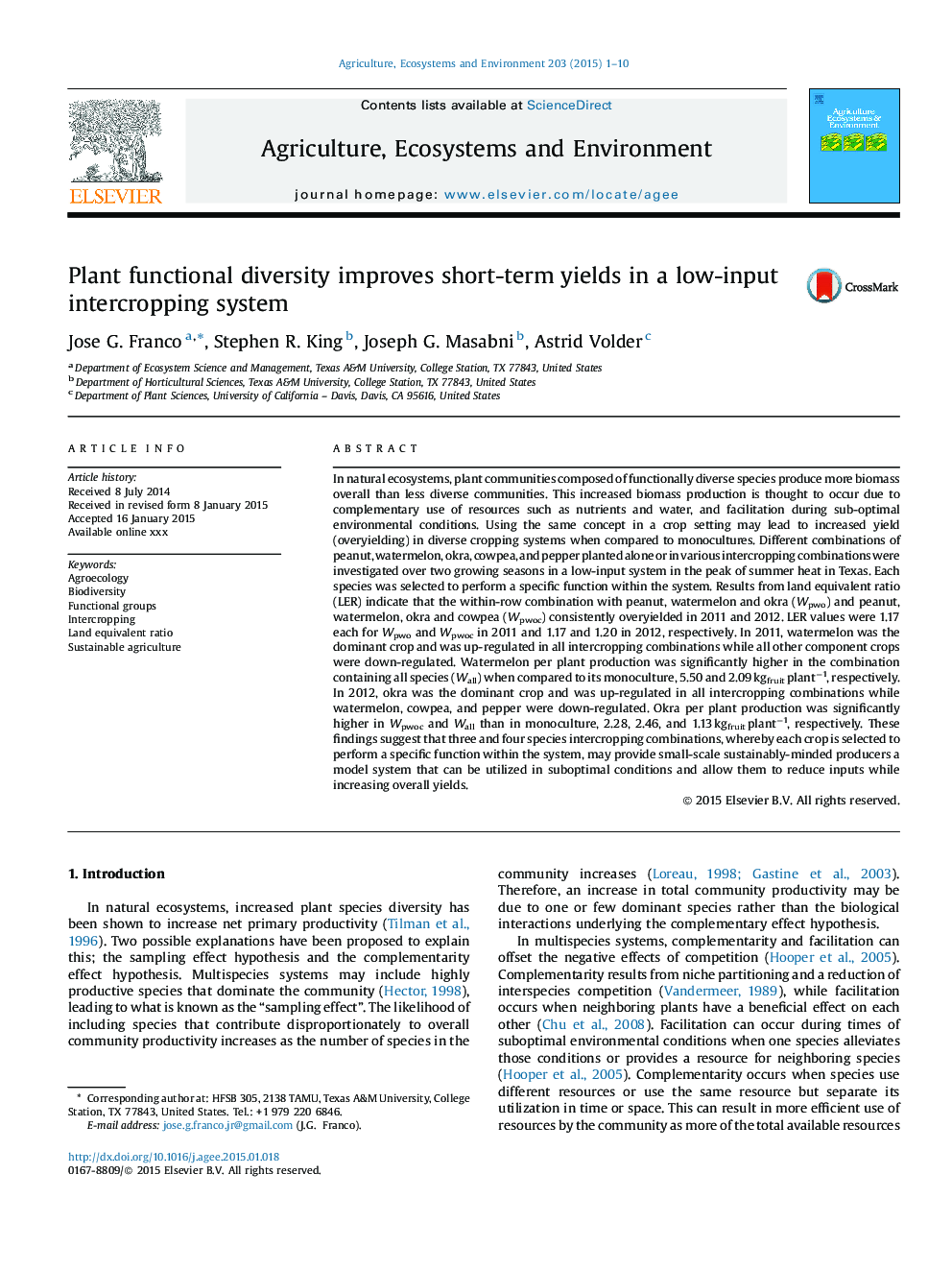| کد مقاله | کد نشریه | سال انتشار | مقاله انگلیسی | نسخه تمام متن |
|---|---|---|---|---|
| 8487754 | 1552049 | 2015 | 10 صفحه PDF | دانلود رایگان |
عنوان انگلیسی مقاله ISI
Plant functional diversity improves short-term yields in a low-input intercropping system
ترجمه فارسی عنوان
تنوع عملکرد گیاهی باعث بهبود عملکرد کوتاه مدت در یک سیستم بینابینی با کمترین ورودی می شود
دانلود مقاله + سفارش ترجمه
دانلود مقاله ISI انگلیسی
رایگان برای ایرانیان
کلمات کلیدی
کشاورزی تنوع زیستی، گروه های عاملی، کشت مخلوط، نسبت معادل زمین، کشاورزی پایدار،
موضوعات مرتبط
علوم زیستی و بیوفناوری
علوم کشاورزی و بیولوژیک
علوم زراعت و اصلاح نباتات
چکیده انگلیسی
In natural ecosystems, plant communities composed of functionally diverse species produce more biomass overall than less diverse communities. This increased biomass production is thought to occur due to complementary use of resources such as nutrients and water, and facilitation during sub-optimal environmental conditions. Using the same concept in a crop setting may lead to increased yield (overyielding) in diverse cropping systems when compared to monocultures. Different combinations of peanut, watermelon, okra, cowpea, and pepper planted alone or in various intercropping combinations were investigated over two growing seasons in a low-input system in the peak of summer heat in Texas. Each species was selected to perform a specific function within the system. Results from land equivalent ratio (LER) indicate that the within-row combination with peanut, watermelon and okra (Wpwo) and peanut, watermelon, okra and cowpea (Wpwoc) consistently overyielded in 2011 and 2012. LER values were 1.17 each for Wpwo and Wpwoc in 2011 and 1.17 and 1.20 in 2012, respectively. In 2011, watermelon was the dominant crop and was up-regulated in all intercropping combinations while all other component crops were down-regulated. Watermelon per plant production was significantly higher in the combination containing all species (Wall) when compared to its monoculture, 5.50 and 2.09 kgfruit plantâ1, respectively. In 2012, okra was the dominant crop and was up-regulated in all intercropping combinations while watermelon, cowpea, and pepper were down-regulated. Okra per plant production was significantly higher in Wpwoc and Wall than in monoculture, 2.28, 2.46, and 1.13 kgfruit plantâ1, respectively. These findings suggest that three and four species intercropping combinations, whereby each crop is selected to perform a specific function within the system, may provide small-scale sustainably-minded producers a model system that can be utilized in suboptimal conditions and allow them to reduce inputs while increasing overall yields.
ناشر
Database: Elsevier - ScienceDirect (ساینس دایرکت)
Journal: Agriculture, Ecosystems & Environment - Volume 203, 1 May 2015, Pages 1-10
Journal: Agriculture, Ecosystems & Environment - Volume 203, 1 May 2015, Pages 1-10
نویسندگان
Jose G. Franco, Stephen R. King, Joseph G. Masabni, Astrid Volder,
